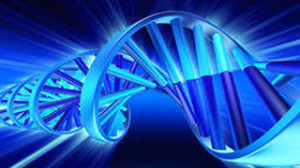
But the logic of the development of research in this area at first goes in the other direction. DNA molecules are used as purely physical "parallel compute» structure. It started in 1994, When Leonard Adleman, Professor of computer science from the University of Southern California, proposed algorithm using DNA to solve a version of the traveling salesman problem» [49]. It is one expression of the so-called problem Gamil′tonianovskogo Path in difficult mathematical tasks (Hamiltonian Path Problem, or HPP), and it is connected with over a vast number of options for possible solutions for optimal. Adleman using "DNA computing" decided problem for 7 cities and highways 13 therebetween, When you need to get the shortest route to visit each one of these cities. It took only one week for a response, While traditional computers would have needed several years. It was used the basic phenomenon, typical molecules of DNA-the ability of its solitary chains to the complementary vzaimouznavaniâm. This phenomenon is, that any fragments of each of the two chains of DNA in solution (or in the chromosomes of a living cell) only their own, in a sense mirror, halves and form a normal dual spiral. This phenomenon is a manifestation of the common properties of highly organized biostructures and polymer molecular entity nadmolekulârnyh to samosborke. So in vitro-in vivo to self-assemble Ribosomes, membrane, the chromosome, viruses and phages. Including DNA odnonitevye. The success and speed of spontaneous DNA halves each other searches, as an act of self-organization (self-Assembly) and provided high speed search options within the "traveling salesman problem». Reasons for fast and precise vzaimouznavanij halves of DNA were unknown until recently. And it is extremely important for the effective establishment of a DNA computer, and this is discussed below. More details on model Adlemana, as his and our logic is fundamentally different. As we (and not only) We believe, path, who chose the Adleman and his many followers, using DNA as a computational structure, they incorrectly evaluated as some kind of DNA computing. David Gifford, one of the major influencers in computing;, first he got Adlemana, said, "this is not a molecular computer, and that this technique ".can only deal with certain types of combinatorial problems, This is not a universal or programmable computer IBM PC type» [50]. To understand the, Why are we and Gifford, brief look at method Adlemana. He marked each city as a segment of single-stranded DNA of 20 bases (bases) with random sequences. The roads between any two cities have been presented as complementary single-stranded DNA segments 20 bases, which overlap half way between the cities of. This is the canonical rule of mating grounds in dvutâžnyh DNA: Adenine-Thymine, Guanine-Cytosine. Way between cities 7 begins with the double-stranded DNA fragment, that connects any two cities. Importantly, that DNA fragments, designating one city, may be more than one. Then a 100 milliardov radioactively labeled "DNA-city" and "DNA-paths" were mixed and expanded in vitro enzymatic amplification of DNA. On this, as Adleman, "DNA computing" ends. Next, to get the answer-the best way (certain fractions of DNA), the reaction mixture with "answer" èlektroforetičeski shared with the, to get all the way, from "start" to "the end". Then allocate the path, who once passed through 7 towns; isolated path between 7 different cities. And if discovered DNA fraction "means" after this phase, they were considered the best («winners»). In this "resolution" and the traveling salesman problem. In the process of finding a "solution" involving billions of parallel rapidly occurring complementary spontaneous (not programmable man) acts "recognitions" odnotâžnyh DNA and billions of spontaneous replication of these molecules of enzyme. The small amount of time and energy is something like "genetic soup». The speed and accuracy of the molecular processes is unthinkable for the equivalent operations in the digital electronic computers, using deterministic vector of information processing. In the case of "DNA computing", How to believe, are not deterministic parallel processing of large arrays of numbers-letters (4 DNA nucleotides).